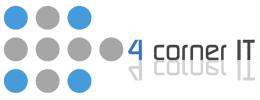Using Google Ad Sense on your website can be a great way to generate extra revenue.
It’s easy to set up an Ad Sense account with Google, and once you place the ads on your blog or web page, you don’t need to do anything outside the usual. Continue to optimize your website and fill it with substantive content; your traffic will increase, and ideally, more people will click on the ads, increasing your earnings.
While the basic process of setting up ads on your site is straightforward, you have to make some considerations about what they’ll look like. For this post, let’s focus on one dimension: size.
What are the most popular Adsense banner sizes?
What sizes would be most effective for you?
Here are some points to consider:
- According to Google, wider ads tend to do better than taller ones. This isn’t a hard and fast rule, but a tendency based on the fact that readers generally have an easier time scanning a wider ad and taking in its meaning at a glance.
- Among the ads Google names as effective, there’s the ‘medium rectangle’ (300 x 250), ‘large rectangle’ (336 x 280), and the ‘leaderboard’ (728 x 90); they also mention the ‘wide skyscraper,’ which is a tall ad (160 x 600) but has more width than the regular skyscraper (120 x 600) and also appears to outperform it.
- In general, bigger ads will get more clicks, because of their greater visibility to readers. However, a huge ad isn’t always feasible given the layout of your blog, and it may not be desirable depending on the tone you want to set with your site. Relatively small square ads are often selected by site owners who may want to fill in small areas of space on their page or who want their ads to be unobtrusive. Sometimes they do look good at that size, but keep in mind that they may not give you much revenue. If you’re determined to use these smaller ads, you’ll need to try and place them in a position where they’re most visible, so that you can get the most out of them.
- Although the horizontal banner-type ads (e.g. the 728 x 90 ‘leaderboard’ and the 468 x 60 ‘full banner’) are popular, they sometimes blend in too well with the site, looking like a page header or another site fixture that readers won’t click. In general, while size plays a role, take care with where you place your ads and how well they stand out. You don’t want them to be so jarring that they distract from the site’s content, but neither do you want them to be unnoticeable.
- Take care not to clutter your page too much. For instance, layering your sidebar with many small ads may make your site look spammy.
Ultimately, the ad sizes that look best will be the ones that suit the layout of your site. But keep in mind that some ads do perform better, on average, than others; be mindful of this when you choose the size and shape of the ad and its position on the page.

